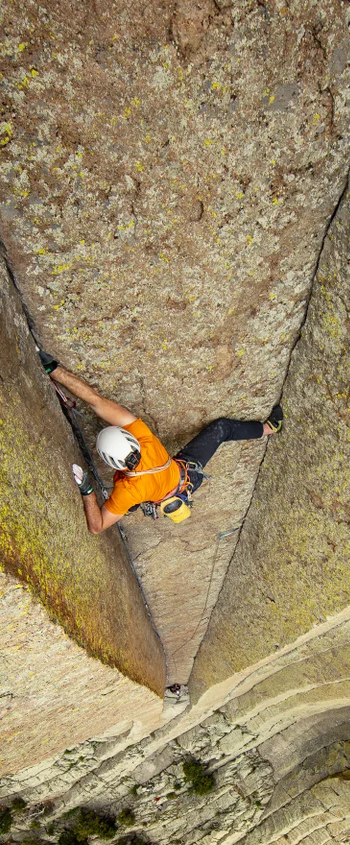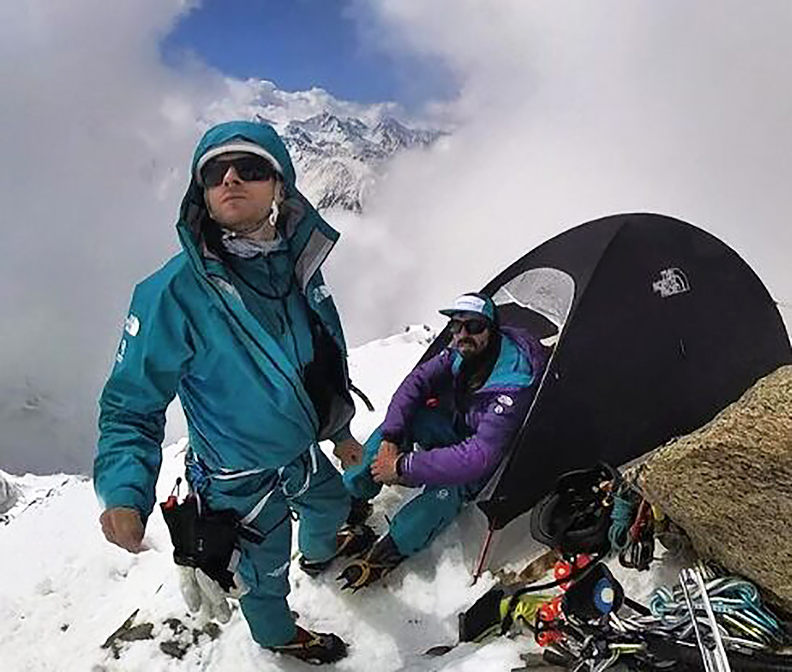Man Critically Injured in Queensland Skydiving Accident
A man is in critical condition following a skydiving accident near Toogoolawah, Queensland. The incident occurred around 3:45 PM on Sunday when the man collided with a pole during his landing, according to a Queensland Ambulance Service spokesperson.
The 29-year-old, who sustained severe head and chest injuries, was immediately airlifted to the Royal Brisbane and Women’s Hospital.
Ben Nordkamp, chief instructor at Skydive Ramblers, reported that the man was performing a routine solo jump as part of a training course. “It is too early to understand what caused the incident, but we know that while the parachute opened and functioned normally, the man hit a post during his descent and sustained multiple serious injuries,” Nordkamp said. He added, “At Ramblers, we do everything we can to make it as safe as possible for our students. This is a distressing time for everyone involved.”
Nordkamp also expressed gratitude towards the first responders and emergency services personnel who provided immediate care and arranged the helicopter transport to the hospital.
The Australian Parachute Federation (APF) has launched an investigation into the accident. APF chief executive Stephen Porter stated, “A safety and training officer travelled to Toogoolawah on Monday morning to begin a thorough investigation into the cause of the incident. Our thoughts are with the young man and his family.”
This incident follows a similar one at the same location in 2021, where a man in his 40s suffered serious injuries after failing to open his parachute in time.
Toogoolawah is located approximately 121 kilometers northwest of Brisbane.
Stay updated with the latest news by downloading the 7NEWS app today.
Source: https://7news.com.au/news/man-critically-injured-in-skydiving-accident-in-toogoolawah-qld-c-14730327
Three Russians parachute from stratosphere to North Pole
Skydiving 75-year-old hopes to keep defying doctors
A 75-year-old woman said she wanted to continue defying doctors when she jumped out of a plane at 12,000ft (3,657m).
Patricia Denton, from Southend-on-Sea, overcame breast cancer and a broken back to lead a life of adrenaline-fuelled activities.
Having marked her 70th birthday white water rafting along the Grand Canyon, her latest task saw her plunge from the sky.
Ms Denton said it was only right that her latest challenge was perhaps her most daring.
She landed safely back on the ground after her tandem parachute jump at Headcorn Aerodrome in Ashford, Kent, on 6 May.
“It was quite amazing, all I could feel myself saying was ‘wow’,” she told BBC Essex.
“When I got down to the ground I said ‘yeah, I want to do it again’.
“I thought I’d get nervous in the plane but actually I got excited and it was really good.”
‘Living the dream’
The adventurous 75-year-old said her efforts were raising funds for Age Concern Southend’s community hub.
“I am having a fabulous time – living the dream – and I would like to give back,” she added.
Ms Denton said friends from across the globe – including in Canada and Australia – had donated to her fundraiser.
She added: “It humbles me that people all over the world are doing this because I’m doing this – and I’m doing it because I want the community hub to succeed.”
The adrenaline junkie said she planned to do a wing walk – where someone moves along the wings of an aeroplane during flight – for her 80th birthday.
Source: https://www.bbc.com/news/articles/ckr5lzkk71do
Learn more: https://www.adventurefilm.academy/
JOSEPH KITTINGER, THE MAN WHO DOVE TO EARTH

First, the indescribable view. Earth, many miles below, twinkling blue, whorls of white and grey clouds. Home is down there somewhere, familiar faces, too, but everything you find comfortable and safe is hidden beneath a blanket of impossible distance. No way to reach any of it but to jump. The silence of the stratosphere is stunning. Nothing but the sound of your own anxious breathing in a sealed helmet. Now, it’s time. Gather yourself, take a deep breath, a hard swallow to settle the void in the pit of your stomach, a last look down at the earth below, a turn of your head to wonder at the impossibly bright stars, a brief moment to appreciate the beautiful absurdity of it all. Then you step into the void.
Joseph Kittinger’s job for the US Air Force in the late 1950s was making that leap. During his career he set records for highest balloon flight, longest free fall, and fastest speed achieved by a human being under their own power (well, under gravity’s too). Kittinger also had a decorated career as a fighter pilot, retiring as a Colonel and earning the Distinguished Flying Cross.
“I said, ‘Lord, take care of me now.’” Kittinger later recalled. “That was the most fervent prayer I ever said in my life.”
When his records for jumping out of the stratosphere were finally broken in 2012 by Austrian madman Felix Baumgartner, Kittinger was right in Baumgartner’s ear during his jump, literally, as the mission’s supervisor directing things over the radio.
“Felix trusts me because I know what he’s going through,” Kittinger said at the time. “And I’m the only one who knows what he’s going through.”
Kittinger was the sort of person who has a flash of what they want their life to look like as a child, then seemingly without any second guessing or hesitation, realizes that dream. He was born in Tampa, Florida, in 1928. As a kid he saw a Ford Trimotor parked at a nearby airfield (the sorta plane Indiana Jones liked to jump from in films). It sparked a lifelong love of aviation, and was the first step on a ladder Kittinger eventually climbed 102,800 feet into the sky.
An Air Force pilot of experimental aircraft in the 1950s, Kittinger was recruited to take part in Operation Man High and Project Excelsior, a series of experiments that kicked off America’s nascent age of space exploration. The Air Force had no idea what the human body could tolerate when it came to acceleration, deceleration, exposure to the thin upper reaches of the atmosphere, or, crucially for Kittinger, what might happen to a pilot if they were forced out of an aircraft at the furthest fringes of the atmosphere.
Kittinger made 3 jumps over 10 months from 1959 to 1960. They went like this. He piloted helium-filled balloons to a predetermined altitude riding inside a pressurized gondola-like car. Once there, he’d jump from the gondola, free fall for a time, then a series of parachutes automatically opened. Kittinger’s first jump nearly killed him when he became tangled in the cords of his stabilizing chute immediately into his jump. He plunged nearly 66,000 feet until his primary chute opened at 10,000 feet.

Undeterred, Kittinger jumped again a month later, before making his record-setting plunge in August, 1960. Aboard the balloon craft Excelsior III, he rose to 102,800 feet, an altitude record in itself. Kittinger’s right glove malfunctioned during the ascent, painfully swelling his hand to twice its normal size. He prepared his body and mind for the jump.
“I said, ‘Lord, take care of me now.’” Kittinger later recalled. “That was the most fervent prayer I ever said in my life.”
He free fell for 4 minutes, 36 seconds. At that altitude, Kittinger was effectively in space, a vacuum. He reached terminal velocity after 20 seconds of acceleration, hitting 614 miles per hour.
Kittinger later told Florida Today:
“There’s no way you can visualize the speed. There’s nothing you can see to see how fast you’re going. You have no depth perception. If you’re in a car driving down the road and you close your eyes, you have no idea what your speed is. It’s the same thing if you’re free falling from space. There are no signposts. You know you are going very fast, but you don’t feel it. You don’t have a 614-mph wind blowing on you. I could only hear myself breathing in the helmet.”
That would be enough for most people, in terms of high-flying excitement. But it was just the beginning for Kittinger.
After his final jump and another high-altitude balloon flight, Kittinger entered active combat duty in the skies above Vietnam. He served three tours, was credited with the kill of a MiG-21, and was shot down near Hanoi in 1972. For 11 months, Kittinger was a POW at the infamous Hanoi Hilton, fiercely observing military discipline to keep himself sane. He retired from the Air Force as a colonel in 1978.

Joseph Kittinger next to the Excelsior gondola on June 2, 1957. Note the sign: “This is the highest step in the world.” Photo: US Air Force
Would you be surprised to learn Kittinger later became the first person to pilot a hot air balloon across the Atlantic? In 1984 he took off from Maine and drifted 3,543 miles over 3 days before alighting safely in Italy.
In his later years, he ran the Rosie O’Grady’s Flying Circus, in Orlando, Florida, taking people up in hot air balloon rides. Did his customers know the avuncular man at the controls had once leapt from a balloon at the fringes of space? Whether or not they did, they were in expert hands.
When Kittinger’s father watched his son at age 13 scale a 40-foot tree to pick coconuts, he was said to exclaim, “Everybody wants coconuts, but nobody has the guts to go up there and get them.”
Those guts earned Kittinger a Distinguished Flying Cross, high-altitude records that stood for 52 years, and the Smithsonian’s highest honor, the National Air and Space Museum Trophy. More importantly for Kittinger, who always pointed out his balloon trips as part of Operation Excelsior were not meant to break records, but to gather data, he experienced the kind of grand adventure only a handful of humans have ever known—charting a part of the Earth, or the envelope of it, nobody else had ever seen.
“Life is an adventure, and I’m an adventurer,” he told U.S. News and World Report in 1984. “You just have to go for it. That’s the American way.”
By Justin Housman
For more details and information : https://adventure-journal.com/blogs/news/joseph-kittinger-the-man-who-dove-to-earth




